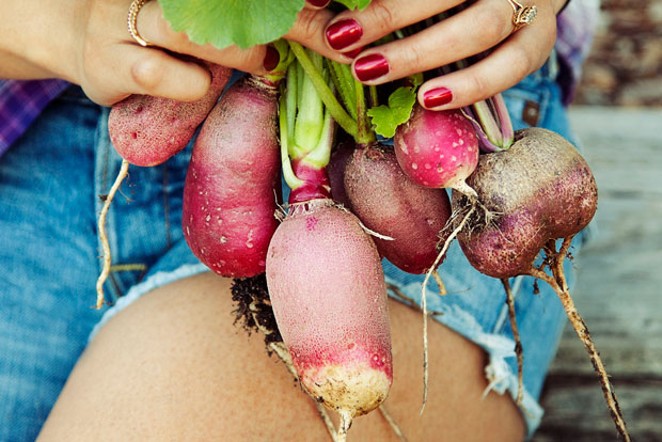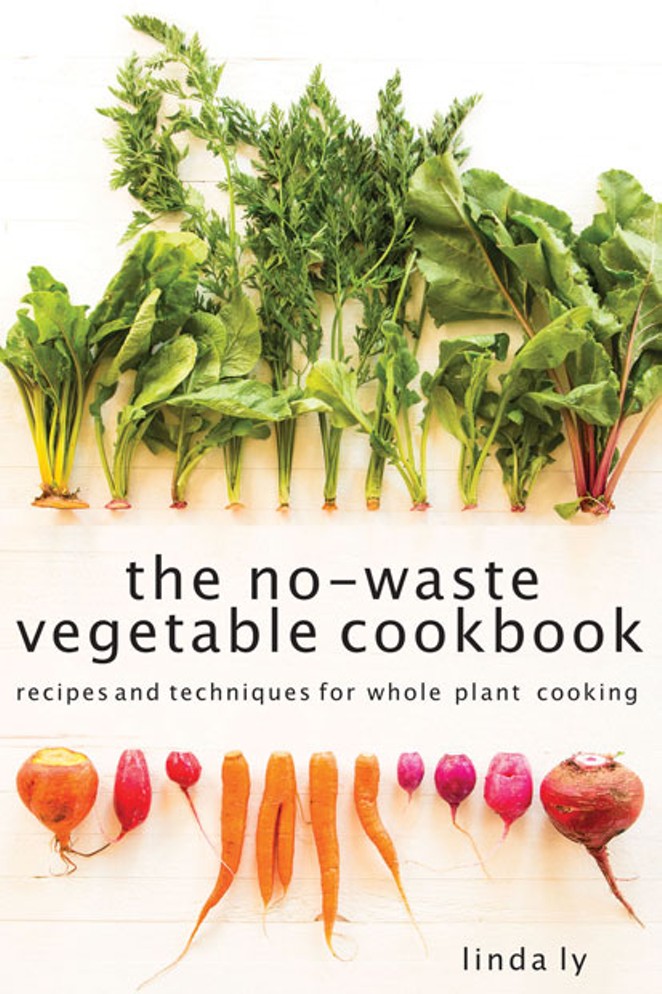When people think about zero-waste living or eating more sustainably, the following usually come to mind: buying food in bulk and bringing your own containers, supporting local farms or composting at home.
But what if I told you to compost less as a way to waste less food? It sounds counterintuitive, but the best way to save some money and offer your family food security — besides growing your own food — is learning how to use more of your food more effectively in the kitchen.
"Top-to-tail cooking," as I call it, is the vegetable equivalent of nose-to-tail butchery. It embraces the idea of using up all the edible parts of plants in your meals, including (and especially) the parts that we typically don't think to eat. It's about discovering a whole new range of flavors and textures from the same vegetables you've always brought home, and it goes beyond simply putting the scraps in vegetable stock.
Here are four "new" vegetables to try in your cooking, and if you want to know what else you've been inadvertently discarding, my new book, "The No-Waste Vegetable Cookbook," has 80 plant-friendly recipes that help you see your produce in new and delicious ways.
1. Leek greens. How many times have you run across a recipe calling for leeks, but instructing you to discard the dark green ends? It's a shame how many leek tops have been thrown out because of this. The dark green parts taste exactly like the white and light green parts, and they're actually more versatile because they hold their shape and texture well when braised or sauteed.
Thinly sliced into half moons, leek greens can be used in place of regular onions or green onions in most recipes, and they have a delicate onion flavor that enhances (but doesn't overpower) the other ingredients they're cooked with.
Onions (which belong to the same family as leeks) also have edible leaves. That means if you buy them from the farmers' market or grow them at home, you can use the leaves from immature onions (also called spring onions) and Mexican green onions. What do they taste like? You guessed it: onions! (Just not as assertive as the bulbs, and without the tears when you chop them up.)
2. Radish greens. Out of habit, many of us cut the tops off radishes before we use them (and I get it, the leaves on most conventionally grown radishes from the supermarket are pretty ratty). But radish greens are not only edible; they contain a variety of phytonutrients not found in the roots (which is the case for almost every root vegetable).
This is because the leaves grow above ground, where they photosynthesize and produce antioxidants (a form of botanical sunscreen, if you will) to protect against the sun. So you get more nutrition and more food out of the same bundle of radishes just by using the leaves!
Spring radish leaves have only a hint of the peppery spice that salad radishes are known for, and they're tender enough to eat raw in a salad. On the other hand, winter radish leaves (from daikon, watermelon radishes and other winter radishes) are very mild and make a good substitute for swiss chard.
3. Carrot greens. A lot of grocery checkout clerks ask if you want them to cut off those carrot tops when you buy them, but wait! That's like throwing away half your money. Bring them home, cut them off yourself (to keep the roots crisp; carrot greens continue to draw moisture from the roots even after harvest), and treat them as a leafy herb.
What kind of leafy herb, you might ask? Carrot greens are a good substitute for parsley with their earthy flavor. You can garnish soups, stews, and other dishes with minced carrot greens, or use them 1:1 for parsley in homemade chimichurri (a tangy Argentine condiment, which you'll find the recipe for in "The No-Waste Vegetable Cookbook").
4. Everything but the squash. This one's for the gardeners, as squash is a truly prolific plant that keeps on giving. (Those of you who try to unload foot-long zucchini on your neighbors all summer know what I'm talkin' about.) You can eat almost every part of the squash plant: the leaves, flowers, fruit, and even the seeds. But my favorite are the tender shoots of summer squash and winter squash, which are mild and velvety.
Squash shoots are common in Southeast Asian cuisine, where they're harvested from opo squash and used in curries, stir-fries, and soups. But as long as you pick them while they're young and tender, and remove all the stiff tendrils, you can eat the green shoots from any squash variety you grow.
Order "The No-Waste Vegetable Cookbook" by Linda Ly from Dudley's Bookshop Cafe (signed copies available) or from major retailers and booksellers nationwide.
Check out Garden Betty's site for more info on urban homesteading, farm-to-table cooking and more.























